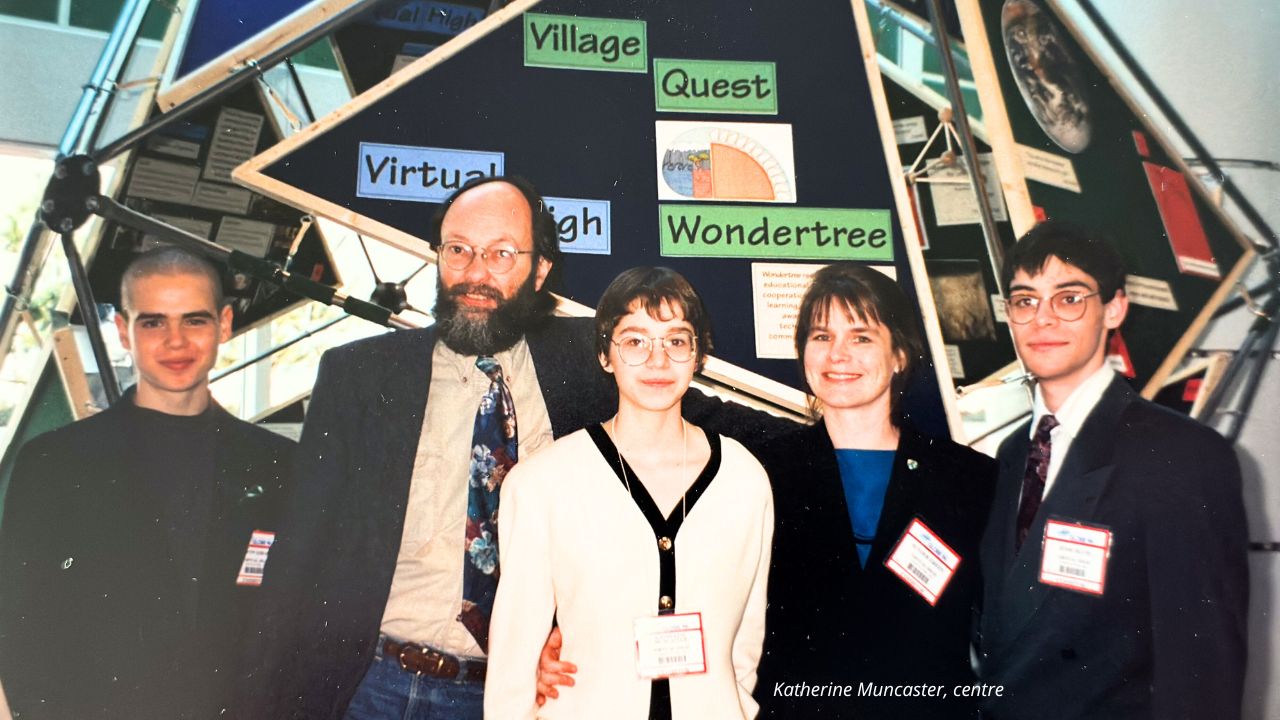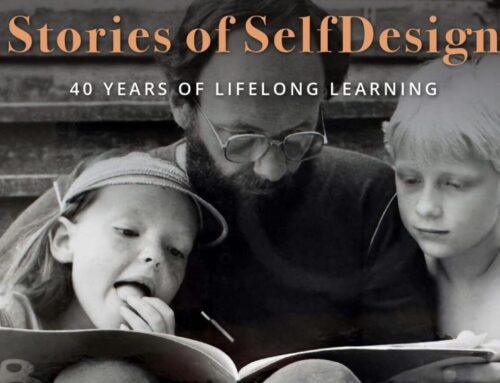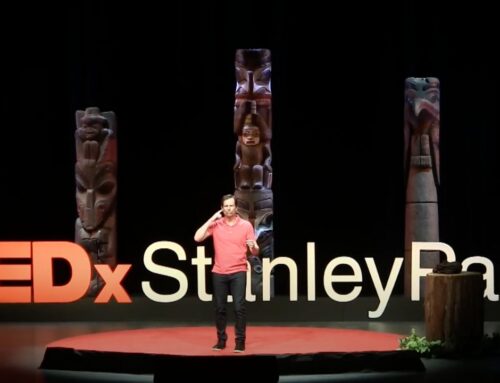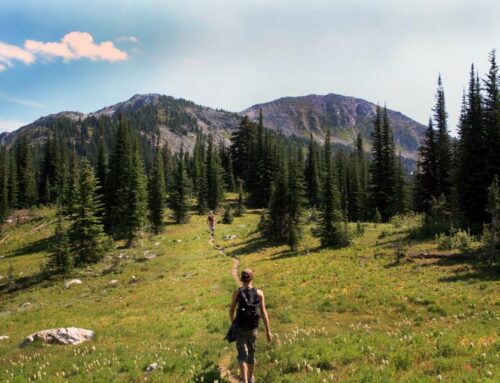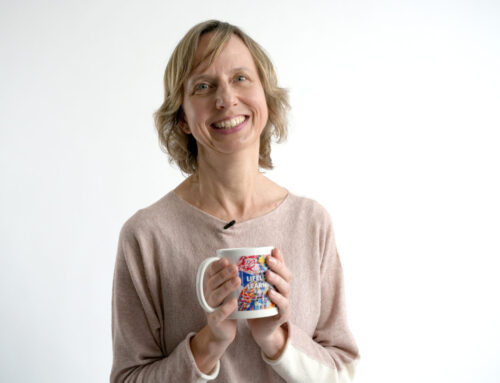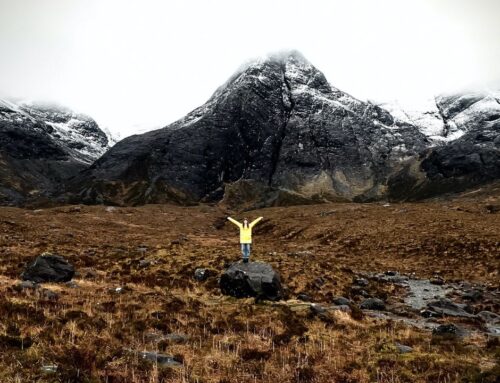Katherine’s Virtual High story
Katherine Muncaster joined Virtual High in 1993, one of the first 35 learners to enroll with the revolutionary new learning program for teens that Brent Cameron and Michael Maser created in an old Vancouver mansion.
She was one of approximately one dozen learners involved in Virtual High’s VillageQuest project. The aim of VillageQuest was to design a sustainable, mixed-use eco-village for a 19-hectare former industrial site on Vancouver’s False Creek, incorporating energy-efficiency technologies and using architecture and landscape design to foster social interaction. Presented to Vancouver City Council by the learners in 1996, the learners’ ideas fed into the City’s vision for that site. A community was eventually built there for the 2010 Winter Olympic Games to house athletes and Olympic officials. It is now a sought-after residential community that showcases many of the green features that VillageQuest originally promoted.
That experience in her teens sparked in Katherine a lifelong passion for working on environmental issues and helped her focus her later studies and work to build her career.
Today, Katherine is Director of Energy Efficiency Policy and Programs with the BC Ministry of Energy, Mines and Low-Carbon Innovation. A role that allows her to be involved in projects similar to those she worked on as a learner at Virtual High.
We talked to Katherine about Virtual High, its impact on her and her journey since.
This is what she had to say.
The following interview has been edited for brevity and clarity.
When and why did you join Virtual High?
My brother and I both started at Virtual High in 1993. I was in grade 9, and my brother is two years older than me.
We went to a talk by Frank Ogden, “Dr. Tomorrow,” as he was known, at Science World. His presentation emphasized computers, how the world is changing quickly and how we need to adapt. Brent spoke, too, about Virtual High.
My dad is very future-oriented. He’s a strategic planner and spends a lot of time thinking about the future. He really appreciated what Ogden and Brent were saying and felt that Virtual High was on the cutting edge of what education should focus on.
As for myself, I was just kind of excited about the whole thing — partly about the computers and partly about the whole ethos of learning more independently.
Describe what the experience of Virtual High was like for you?
I remember the reality of it being very different from what I thought it was going to be. We went in thinking, ‘Oh, this is such a cool technology school,’ and yeah, we were given laptops and a lot of people were doing programming, but that’s not at all what it was about. It was about being self-directed.
And then it was also this community with a bunch of cool hippies— I hadn’t been exposed to any of that before, coming from a family that was pretty standard suburban and not at all exposed to any of those philosophies and ways of life. It was a big, big change for me.
Virtual High really was a transformative experience. It created a new reality for me, in terms of being exposed to different ways of thinking. It sparked a greater sense of self-awareness in a very conscious kind of way and a broader way of thinking — of thinking outside the box and being aware that you shouldn’t take everything at face value, that there may be other, better ways of doing things.
And there was a real sense of camaraderie and community — above all, community — that I’d never experienced before. I really loved that feeling of community and of acceptance — of feeling like I could do the stuff that I wanted and pursue my passions and interests, and everyone would be supportive and non-judgemental. It was a really supportive environment for people to flourish in, whatever they wanted to do.
Before that, I had gone to a normal high school for one year — and it was a good school; there was no bad stuff going on. It was pretty positive, and I was a good student, but I still felt this overriding pressure to fit in or get in with the right people. I was often the only one in class interested in learning. In any class, I was the goody two-shoes at the front asking questions and wanting to know stuff. I just felt, ‘Why isn’t anybody else like that?’
At Virtual High, I felt that it was totally acceptable and normal to be interested in learning. And I could kind of do it in whatever way I wanted and on topics I was excited about.
There was also this sense of, “Hey, we’re all here together.” It was very welcoming and eye-opening in terms of what it’s like to be comfortable with all sorts of people who were very different from myself. It was really, really diverse.
It made a really strong impression on me in terms of what’s possible — the idea of consensus and being part of a group that makes decisions together, cares about each other, and has an expectation of really positive relationships.
I loved it.
When did you leave Virtual High?
I left after three years. I wanted to go to university by the easiest way possible, so I kept up on correspondence courses while I was at Virtual High. By grade 12, it made sense for me to return to public school to finish high school.
What did you do then?
Well, in grade 12, I was thinking, ‘I could study environmental engineering,’ or ‘I could do biology.’ In the end, I chose a liberal arts route.
I went to the University of British Columbia, where I studied geography, which I love. Geography covers everything — you can do geography of anything. I did physical geography, which is biology and landforms, and human geography, which overlays the political, social, cultural, and that kind of stuff.
My minor is in Economics. I wanted to appreciate how environmental problems are bound within systems of human realities, which are driven by economics.
Then I did a Master’s degree in resource and environmental management at Simon Fraser University, where I specialized in environmental energy policy.
How did your Virtual High experience influence your choice of career?
I’m now the Director of Energy Efficiency Policy and Programs in the BC Ministry of Energy, Mines and Low-Carbon Innovation, and I find I do very much the same sort of environmental work that I started being interested in when I was in Virtual High.
The VillageQuest project at Virtual High was the inspiration and got me on that track. For me, the project’s focus on the environment piqued an interest that I subsequently sharpened. Because of it, I just had a really clear vision of what I wanted to do with my life, not just for a job but as a lifelong passion.
I did a lot of research for VillageQuest about sustainable design and environmental topics. And when we were doing mentorships, I ended up working with Pille Bunnell, the mother of Kalev Tait, another Virtual High student. Pille was an environmental consultant. I attended a bunch of meetings and sessions as her helper for a year or so, and I was involved in some of their environmental software projects.
I wrote the VillageQuest brochures. I remember enjoying the process of creating something and putting my writing skills to professional use. I’m sure if I saw those brochures now, I’d be embarrassed, but at the time it was pretty exciting. And we actually used them, too. Brent was always looking for opportunities for us to speak in public about what we were working on. There was always the next exciting thing to drum up support for our ideas. I spoke at an Architecture Institute of BC conference about VillageQuest, and we gave a presentation at a conference in Findhorn, Scotland. We did a bunch of local presentations, too. Some city councillors came and talked to us, and some environmentalists took an interest.
So, those things combined definitely set me on my career path.
Who knows what I would have done with my life if I hadn’t gone to Virtual High, but I feel I had an advantage compared to my peers because I knew from age 14 or 15 what I wanted to do. Because of that early insight, I was able to consciously gather experiences to help me along that path. I had that amazing mentorship with Pille. I was in the co-op program at university, and my co-op internships helped me get accepted for a self-directed study in environmental economics as an undergraduate with one of the key professors at the university’s Sustainable Development Research Institute. He didn’t usually accept undergrad students, but I explained my situation and my background, and he took me on.
[The Sustainable Development Research Institute was established at the University of British Columbia in 1991 to foster policy-relevant research on sustainable development. It merged with the Institute of Resources and Environment in 2002 to form the Institute of Environment, Resources and Sustainability.]
That experience helped me get a job at the Institute. And that job helped me get into my subsequent graduate studies with a really well-known professor, and that in turn helped me get the job I’m in now. One thing just led to another.
Does your experience at Virtual High, with the emphasis on community, self-awareness and consensus-building, influence your approach to your work today?
I would say the experience of community-building with such a diverse group of people developed within me a certain level of intuition about people and processes.
I wouldn’t say that there is a direct correlation to how I do my work now, because it’s a very different setting — a business setting as opposed to a community-learning and -living setting.
That said, some experiences — positive and negative — have shaped my approach. I loved that sense of community, but I also got to experience firsthand how much time building consensus takes. Brent and Michael were big on building consensus among everyone at Virtual High — all decisions had to have everyone on board for them to go ahead.
And in business settings — actually, in many settings — I shy away from consensus. I prefer democratic processes whenever possible because I know from Virtual High how time-intensive achieving consensus can be and how sometimes a couple of people can stop things in their tracks. There are pros and cons to that, of course; it depends on what you’re aiming for. All that, of course, is overlaid with my subsequent experience — my studies about political interest groups, my work in public policy, and other work.
I deal with a broad range of stakeholders, and when you have a room full of lobbyists and environmentalists, consensus isn’t possible. We need to hear all voices and come up with a decision, and often the best solution is one where everybody’s a little bit unhappy.
But it’s nice to have had experience with a different type of decision-making.
Are there any other ways that you’re using what you learned through Virtual High?
I’m the chair of a community garden in my neighborhood. I was the lead volunteer to get it started with the community association, and that, I feel, arose from my interest in gardening, sustainable agriculture and permaculture, which arose out of Virtual High and VillageQuest.
Getting the garden approved and built has been a process. It took us six years to get the garden started. We had three different sites, all of which were opposed by neighbours. It took so much effort to get it up and running.
But, any kind of community project is about working with a group of people, each of whom has their foibles and ways of being and interacting with others. I would have to remind myself, “Take a deep breath. We’re building community, and building community is not easy.” There’s a process involved, and if you want the benefits of relationships and community and building something beautiful, you have to accept that there’ll be a lot of interacting with other people and dealing with everybody’s wants and needs.
It’s been useful for me to have had that earlier experience at Virtual High, because I otherwise probably wouldn’t have had a sense of what building community and relationships really means.
What did you learn from your experiences at Virtual High about yourself, life, learning — the Big Stuff?
I discovered both strengths and weaknesses. I discovered that I have a lot of curiosity. I also discovered that I find deadlines really helpful.
One observation about myself is that, even if I was interested in a class, when we had assignments, I needed some external force to help with motivation. I completed Science 10 by correspondence at first but later did a fun science class through Virtual High that could also count as Science 10. To this day, I remember that I didn’t complete my final assignment for that and then just felt rotten about it. We were asked to assign ourselves a grade for the course, and I gave myself a pretty low grade because I hadn’t done that assignment — even though I actually had an “A” through the correspondence course already.So that was a bit of a learning takeaway: even if I’m passionate about something, I find it really helps to have some kind of external force saying, ‘Thou shalt finish this.’ To this day, if I don’t have a deadline, the work just doesn’t get done.
It’s just like I’ve got a guitar hanging on my wall, but I still haven’t actually learned to play it.
What advice would you like to share with today’s SelfDesign learners?
Today’s learners may not appreciate this, but I would tell them to learn their math and their times tables. The world is a fantastic smorgasbord of information, but there are definitely some useful basics that will stand you in good stead whatever you go on to: reading, writing skills, math….
When I was at Virtual High, my parents made it clear I was expected to go to university. In today’s world, the trades may be a better way to go, but whatever higher learning you choose, there are some basic skills that you want to master to move to the next stage of learning.
Go deep into what you love, but also try to be well-rounded to keep your options open.
Meet other SelfDesign learners, past and present
Meet other members of SelfDesign’s community, past and present
Learn more about our 40th anniversary
Share your own SelfDesign story or memories

